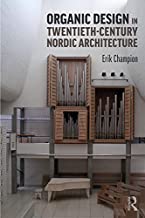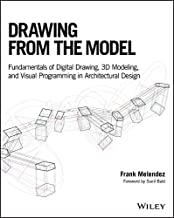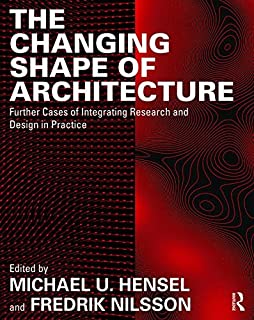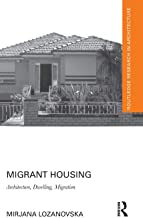Organic Design in Twentieth-Century Nordic Architecture
Original price was: ₹3,983.82.₹3,187.06Current price is: ₹3,187.06.
ISBN: 9780415787284
Author/Editor: Erik Champion
Publisher: Routledge
Year: 2019
2 in stock (can be backordered)
Description
Organic Design in Twentieth-Century Nordic Architecture presents a communicable and useful definition of organic architecture that reaches beyond constraints. The book focuses on the works and writings of architects in Nordic countries, such as Sigurd Lewerentz, J?n Utzon, Sverre Fehn and the Aaltos (Aino, Elissa and Alvar), among others. It is structured around the ideas of organic design principles that influenced them and allowed their work to evolve from one building to another. Erik Champion argues organic architecture can be viewed as a concerted attempt to thematically unify the built environment through the allegorical expression of ongoing interaction between designer, architectural brief and building-as-process. With over 140 black and white images, this book is an intriguing read for architecture students and professionals alike.
Additional information
| Weight | 0.467 kg |
|---|
Product Properties
| Year of Publication | 2019 |
|---|---|
| Table of Contents | i. Table of Contents ii. Table of Figures iii. Table of Tables iv. Preface v. Acknowledgements vi. Foreword by Professor Adrian Carter 1 INTRODUCING THEORIES OF THE ORGANIC 1 1.1 Definitions: 2 1.2 Parameters 25 1.3 References 27 2 SWEDEN 30 2.1 Sweden: Background 31 2.2 Isak Gustav Clason and the Klara School 36 2.3 Carl Westman (1866-1936) 38 2.4 Ivar Tengbom (1878-1968) 39 2.5 Carl Bergsten (1879- 1935) 39 2.6 Ragnar ?tberg (1886-1945) 40 2.7 Klara School Ideas 45 2.7.a The Dissolution of Mass into Surface and Ripples 46 2.7.b Decoration, Containment and Direction 47 2.7.c Missing Clues and Burled Enigmas 49 2.7.d Nordic Light 51 2.8 The Klara School: Summary 52 2.9 SIGURD LEWERENTZ 54 2.10 Lewerentz?Ideas 56 2.10.a Ripples, Eddies and the Trace of the Line 56 2.10.b The Upturned Boat 60 2.10.c The Hidden and the Seen; Slits Rents and Washes of Light 61 2.11 Lewerentz: Summary 64 2.12 Erik Gunnar Asplund 65 2.13 Asplund: Ideas 70 2.13.a Human Sculpture & the Use of Symbolism 71 2.13.b Lightness, Lighting and Light: On the City Library curtains 82 2.13.c Path and Centre 86 2.14 Asplund: Summary 100 2.15 References 105 ? 3 FINLAND 110 3.1 Finland: Background 111 3.2 Lars Eliel Sonck 114 3.3 Sonck? Ideas 118 3.3.a "Character" Building with the Accretive and the Aedicular 119 3.3.b The Billowing Roof, the Protrusile Wall, the Wobble of Corner 122 3.3.c Plays of Light 125 3.4 Sonck: Summary 127 3.5 Armas Lindgren, Herman Gesellius & Eliel Saarinen 128 3.6 L-G-S Ideas 131 3.6.a The fall of Land, the Walking Column and Epoch-Stratified Skin 132 3.6.b Crenelated floors, fissures, and fortresses 133 3.7 Summary 134 3.8 Alvar Aalto 136 3.9 Aalto Ideas 142 3.9.a Ruined suggestion and the Devolution towards "Humane" Architecture 142 3.9.b Heterotopia versus Cytogenesis and the Pull of Focus 146 3.9.c Typology and "Stylistic Metaphor" 154 3.9.d Spatial Flexibility 157 3.9.e Fighting Hermetic Enclosure-The Floating Ceiling, the Stave, Lattice and Arboreal Space 160 3.10 Summary 163 3.11 Reima & Raili Pietil?166 3.12 Pietil??Ideas 168 3.12.a Mythological Morphology and the Expression of Force 169 3.12.b Fragmented Light and the Suspension of Mass 171 3.12.c Surrealism and Symbolism 172 3.12.d Climatic Denudation 173 3.13 Pietil?: Summary 173 3.14 Reference 176 ? 4 DENMARK 178 4.1 Denmark: Background 179 4.2 Hack J. Kampmann 188 4.3 Kampmann? Ideas 189 4.3.a Thematic Detail of the Exotic, the Eroded and the Rather Well-Used 190 4.3.b Dissipation of Mass and spatial seepage 195 4.4 Kampmann: Summary 196 4.5 Arne Jacobsen 197 4.6 Jacobsen? Ideas 198 4.6.a Pilotis, Cantilevers and Space Frames with Knee-High Fragility 198 4.6.b Visual Privacy 202 4.7 Jacobsen: Summary 203 4.8 J?n Utzon 206 4.9 Utzon? Ideas 210 4.9.a The Fifth Facade 210 4.9.b The Erosion of Mass into Light 212 4.9.c The Wall and the Spine 214 4.9.d Focus 216 4.9.e Simplicity of elements but complexity of relationships 218 4.9.f Servant and Served -Platform and Pagoda 222 4.10 Utzon: Summary 223 4.11 References 226 5 NORWAY 229 5.1 Norway: Background 229 5.2 Knut Knutsen 234 5.3 Knutsen? Ideas 236 5.3.a The Spatial Bubble and the Spilt-Vista of Capillary Architecture 236 5.3.b The Rough and the Exposed of the Ready-Made Detail 242 5.4 Knutsen: Summary 243 5.5 Sverre Fehn 245 5.6 Fehn? Ideas 250 5.6.a Horizons, Vistas and Agrarian Space 250 5.6.b Territorial Psychology of the Curved, the Straight, and the Hilltop 256 5.6.c Suspense and the Sublime 257 5.6.d Textual Relationship as Theme 260 5.7 Fehn: Summary 261 5.8 References 263 6 CONCLUSION 268 6.1 References 276 |
| Author | Erik Champion |
| ISBN/ISSN | 9780415787284 |
| Binding | Paperback |
| Edition | 2 |
| Publisher | Routledge |
You must be logged in to post a review.






Reviews
There are no reviews yet.